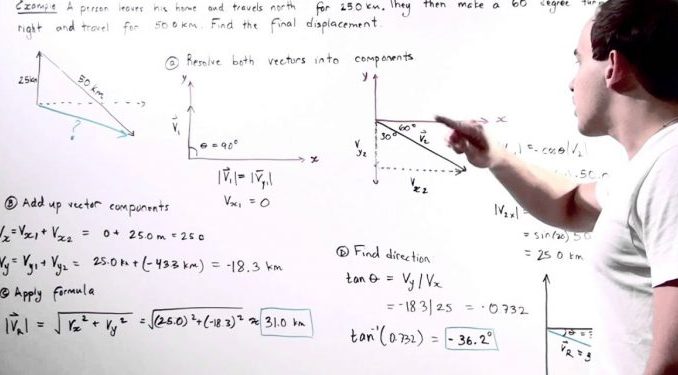

Vectors are objects that have direction and magnitude. Geometrically, we can picture vectors as focused line segments, where the arrows are indicators of direction, and the magnitude of the vector is denoted by the length. Vectors in our day-to-day lives are used to locate entities and objects. Vectors also help in describing objects that act under the stimulus of external forces. Vectors are quantities that have magnitude and direction, represent velocity and force in physics, and have various other uses, here we are going to talk about vectors in math.
Vectors represent quantities. Let’s understand with the help of an example if you travel 20 kilometers North, your trip may be denoted as a quantity of vector. We understand that the
The distance traveled is 20 km and we are aware we are going in the north direction. Scalar quantities are used along with vector quantities and they only have magnitude.
Vectors are defined in two ways. Vectors can be thought of as points in a coordinated system corresponding to the points in space. Most school students who are insightful and good at mathematics frequently complain that the use of vectors is not clearly understood by them and the reason they feel this is because most of the text taught in school switches amongst explanations of all sorts of vectors without providing any justification on what the vectors do. It is very important to refer to the notes online, explained by Cuemath, they have expert explanations on the subject and clear all your doubts.
Vectors are frequently introduced as objects that have direction and magnitude, for example, transformations, displacements, paces, forces, etc. Free vectors are what it means when we define it this way. If we understand it simply, it means that if the direction and magnitude of two vectors have the same length and are parallel to one another, they are considered identical. This defines a vector as an endless set of line segments that are parallelly directed.
Some important points about Vectors:
1) A Scalar quantity is the magnitude of a Vector
2) Multiplication in vectors can be done by a scalar. The result received is another vector.
3) Suppose we take c as a scalar and t = (a, b) as vector, scalar multiplication would be defined as ct = c (a, b) = (ca, cb). Each and every constituent of the vector has been multiplied by a scalar to get the results.
4) The addition and subtraction of two vectors can be done with each other if they have similar dimensions.
Mathematics considers spaces and points as essential abstract ideas and shapes a model of space by making use of a coordinated system. A three-dimensional coordinate system simply means an unlimited set of real numbers in triple order (a,b,c) and every point is agreed by one of these, and are called coordinates of a point. To every free vector, a position vector corresponds. This is why position vectors are defined as points in space.
When the coordinate system is chosen we efficiently single out an illustrator from every free vector that we have in space, specifically the one that ‘starts’ from origin. If the coordinates of point A are (aa, ba, ca) then the position vector is A=(aa, ba, ca) which could also be written as a column vector.
Often working with position vectors is always useful, rather than free vectors. Position vectors and free vectors have conceptual distinctions amongst them, they can be used interchangeably but if our concepts are not clear about the definitions it could cause confusion.
The vectors of algebra (addition, subtraction, and multiplication) that work in one system correspond to the other system in vector algebra. If it suits us we can shift from position vectors to free vectors, do the algebra, and vice versa.
The trick is in practicing a lot of online math. You will surely come out with flying colors if you follow these important tips on vectors.